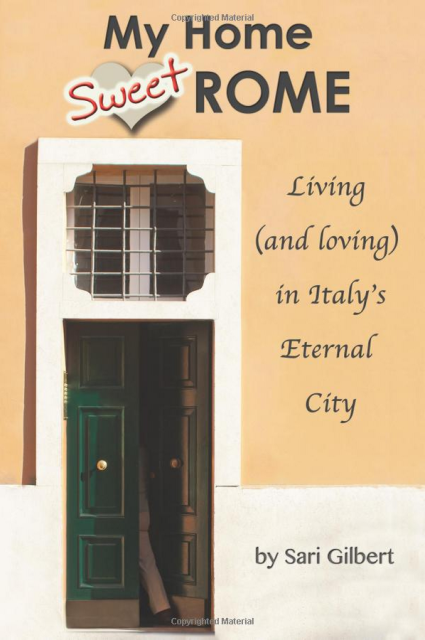Read an excerpt
The taxi is careening down narrow streets, taking hairpin turns, backing out of mistakenly entered one-way streets, weaving around parked cars while the pastel façades of low, crooked buildings – seemingly identical despite their different colors – flash by. The driver, who will shortly take advantage of my confusion by pocketing the 100,000-lire bill I give him instead of the 10,000-lire note I should have chosen, is not happy navigating the narrow streets of this labyrinthine neighborhood where, I am quick to notice, flapping, third-world-like laundry-lines alternate with fashionable boutiques. “Imbecilli, idioti,” he mutters as pedestrians meandering down the middle of the narrow roadway make little effort to get out of the way, repeatedly forcing him to come to a full stop. Although I am soon to come to agree that this is, indeed, an extremely irritating Roman habit, for the time being I am content to sit and observe. In fact, I think, the small knots of local residents chatting calmly on street corners confirm that, yes, the pace of life is definitely slower here than back in New York or even up in the Italian North.
By now, I am convinced that the taxi driver himself is lost even though, he has confessed, he was born only a few blocks away. (“But we moved, grazie a Dio, to someplace modern: Two bathrooms and a garage!” he exults.) But he can’t stop bemoaning the fact that this or that one-way street ran in the opposite direction only a few weeks before, or so he says.
We slow down as a blue motorino (a moped) comes up the one-way street towards us, its driver, who is clearly in the wrong, nevertheless motioning us aside to make room for him. A Vespa, driven by an unshaven, middle-aged man in an undershirt with a small boy standing precariously on the running board between the driver’s seat and the windshield, unexpectedly darts out of a side street that doesn’t look wide enough for motor traffic. A thick-set woman in one of those shapeless, flower-patterned summer dresses favored by middle-aged southern Italian women, particularly by the portiere – the generally portly, female concierges who sit in a small room just inside the main doorway of a residential building and tell you where to find this or that tenant – steps out of a doorway without looking and narrowly misses a premature trip to the camposanto, the “holy field”, as many Italians call a cemetery.
I am starting to feel frantic and crane my neck, peering out the window in the hopes of seeing, somewhere, the name of Olivia’s piazza, “Sant’Egidio”. In this ancient part of town, street names are written, or rather chiseled, on stone tablets placed high on corner buildings – but not on all corners, I notice, as yet unaware that this lack of semiotic consistency will turn out to be quite indicative of the Roman method of urban organization. We pass a seemingly endless number of grocery shops, a restaurant with paper tablecloths and, but I could be wrong, a tiny gray-haired woman walking a Siamese cat on a leash. Where are we? Where is Olivia’s apartment? I am totally confused and wonder how I will ever find my way around this maze-like neighborhood.
This is an exceprt from Chapter One of the book, “Arrival”.


